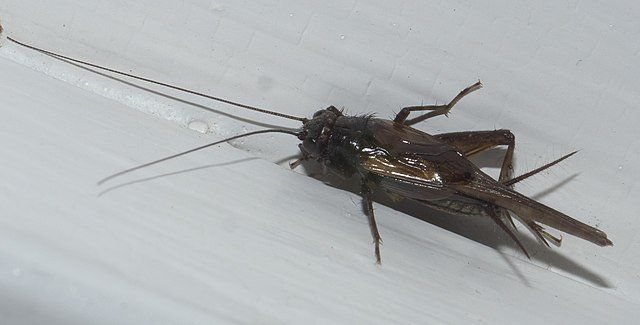-- Pest Library --
Cricket
Cricket Description
Field crickets range from 1/2 – 1 inch in length. Field crickets can be dark brown or black in color.
Diet
Crickets will eat almost anything, including fabrics, other insects (dead or alive), food products, and furs. Outside, crickets generally feed off plants and other insects. Indoors, crickets can feed on a variety of fabrics, foods and paper products. Cotton, linen, wool, rayon, nylon, silk and furs are also at risk, along with soiled materials, wallpaper, bookbinding glue, fruit, vegetables, and meat. Crickets have been known to cannibalize when there is no other food source available.
Life Cycle & Reproduction
Crickets go through simple metamorphosis (egg, nymph, adult) and typically have one generation per year. Adults mate in late summer and females deposit 200 to 2,000 eggs in soil or wood during the fall. The eggs hatch into nymphs the following spring. Nymphs look like the adults except are wingless and smaller in size; they will develop through 8 to 10 instars before becoming adults.
Habitat
In warm weather, crickets usually live outdoors, and are often found near garbage. In the colder months, they seek shelter. Crickets are nocturnal, hiding in warm dark places during the day. but will move inside when grasses dry up or environmental conditions outdoors become unfavorable (excess heat, cold or rainfall).
Threat
Although crickets do not infest food or harm humans, they are considered pests when they wander into homes, especially when their chirping causes a disturbance. Crickets find their way into buildings through cracks in the building foundation and doorways of garages and can be a nuisance pest. Field crickets are attracted to light. They may eat holes in stored fabric made of cotton, linen, wool, silk, nylon as well as furs, especially if soiled.










